If you do not know where your gold came out of the earth, it is dirty gold that has destroyed some part of our planet’s ecosystem.
Is recycled gold ethical, eco-friendly, or sustainable? The answer is, NO.
Here’s why:
Right now, gold mining is transforming intact ecosystems all over the world into wastelands.
Yet, your purchase of recycled gold jewelry has ZERO social or ecological impact on mining. It does nothing other than support companies, both large and small, that do nothing for the environment or for producer communities.
In fact, mercury poisoning, slave labor, ecocide, poisoned aquifers, + indigenous displacement are the toxic legacy of your “eco friendly” recycled gold wedding ring and recycled gold engagement ring.
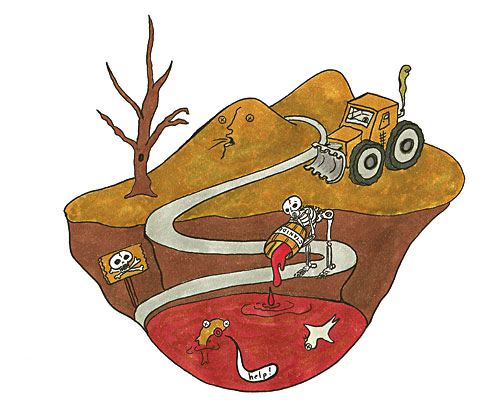
The bottom line is:
If you do not know where the gold was mined, it is dirty gold.
But the good news is: if you really care, there are better options: Fairtrade Gold + Fairmined Gold.
This article provides an essential insider view on recycled gold jewelry: info nearly impossible to find anywhere else.
I’m going to tell you how this all works, step by step. Along the way, you’re going to become more of an expert in ethical jewelry issues.
First, you’ll learn about where recycled gold comes from and how so-called “eco,” “ethical,” or “responsible” jewelers collaborating with large corporate supply houses spin recycled gold narratives designed to mislead and deceive socially-concerned customers.
Second, you’ll discover how purchasing a wedding or engagement ring can empower grassroots economic development for the benefit of impoverished small-scale miners, reducing global mercury contamination.
Lastly, at the end, I’ll provide you links to articles for further information on both gold and diamonds. This is followed by my bio. I've been a jeweler and activist for 26 years, and I write feature articles on ethical jewelry for top trade magazines.
After reading, you will be more empowered to align your economic decisions with your heartfelt values — enabling you, with your jewelry purchase, to be part of a real solution.
The Big Recycled Jewelry Eco Lie: Here’s How It Works
Jewelers have always bought gold to recycle and repurpose into new jewelry. It is a revenue stream. Just buy gold at a certain percentage (which you don’t tell the customer) and sell it at spot price.
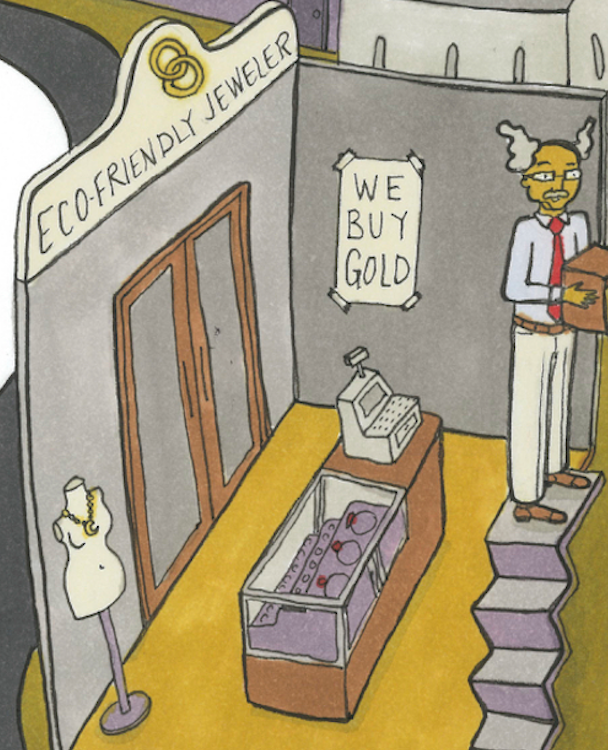
Insider tip: if you ever sell gold to a jeweler, demand to know the percentage of spot price you’re getting. Anything less than 70% is unfair!
From there, it’s time to collect.
This is done by refining the gold, as illustrated below. The friendly jeweler pours the gold into a refining machine. Basically, it is a complex chemical process that separates alloys from gold.
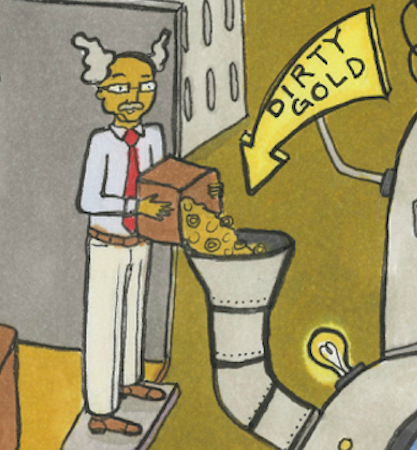
In real life, scrap gold looks like this below, which is from my own shop:
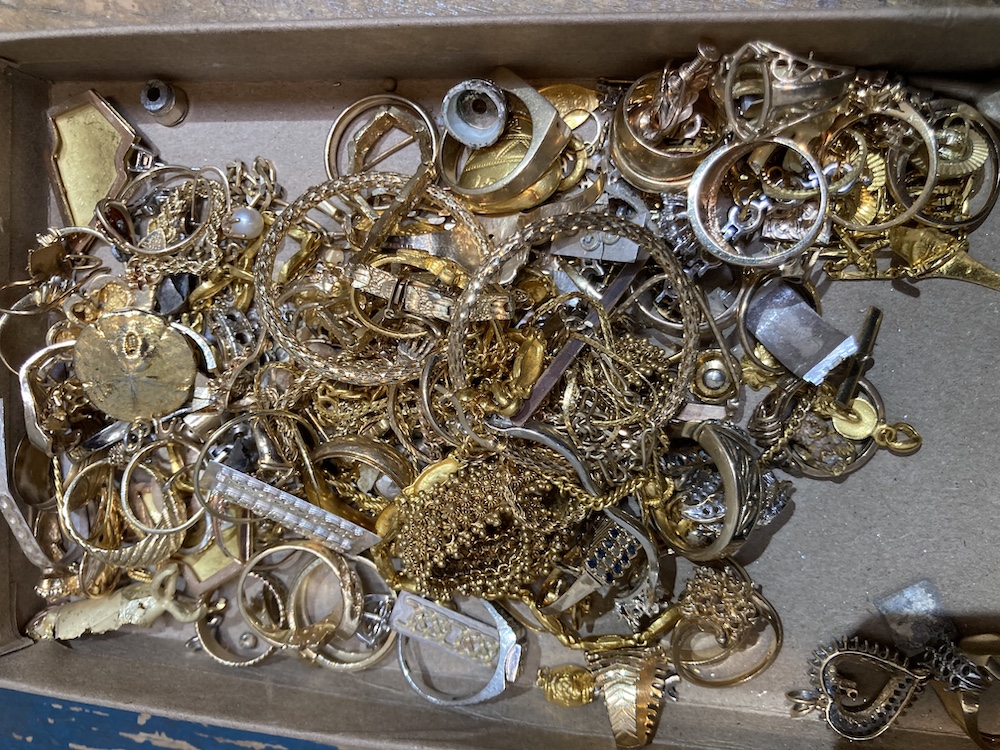
The basis for ethical sourcing is traceability to source. I purchased this gold from customers and used the money to buy Fairtrade Gold, which has the potential to transform the lives of millions of impoverished small-scale miners.
This particular batch had a bunch of gold from teeth. Where did this gold come from before it was made into jewelry and dental fillings?
Easy answer: From mines that have destroyed entire ecosystems, or contributed to the displacement or genocide of indigenous communities. Recycled gold could even come from teeth from Holocaust victims, for all we know.
In the old days, recycled gold was never said to have “ethical” value. Every jeweler recycled gold. They’d send it to refiners for cash or to have the gold converted into pure 24K gold.
But these days, jewelers take advantage of the halo effect of the term “recycled” to tap into the conscious consumer market. The word “recycled” is powerful! Recycled aluminum, cardboard, glass, and plastic can all make a difference — because recycling any of those products saves resources.
But gold is a currency hedge. It is an extremely expensive material and it will always be mined, regardless of how much recycled gold is used.
Nevertheless, the jewelry sector in North America LOVES touting recycled gold, primarily because it is a double win: it appeals to green consumers and — equally important — jewelers don’t need to make any changes to their supply chain.
Refining machines have become greenwashing machines!
Dirty gold is refined and pops out as “eco-friendly recycled gold.”
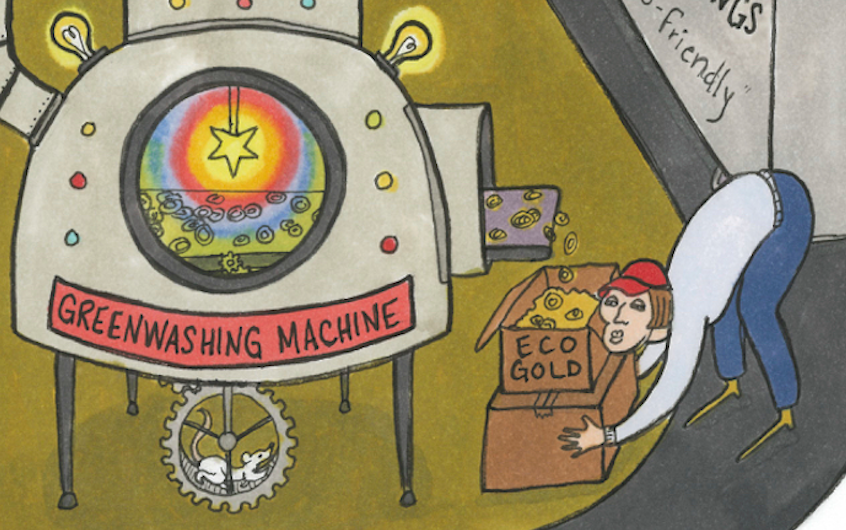
From there, the gold can be made into ethical recycled gold wedding rings and responsible eco-friendly recycled gold engagement rings!

These days, ethical/responsible/eco-friendly jewelry is the HOT TREND! Every jeweler can do it!
All you do is tap into the recycled jewelry narrative, which is easy!
Suppliers, refiners — they are all feeding at the recycled jewelry troth, trying to engage your social media cred to boost their greenwashing to an even higher level.
Check out this Instagram post from Rio Grande, one of the largest jewelry supply houses:
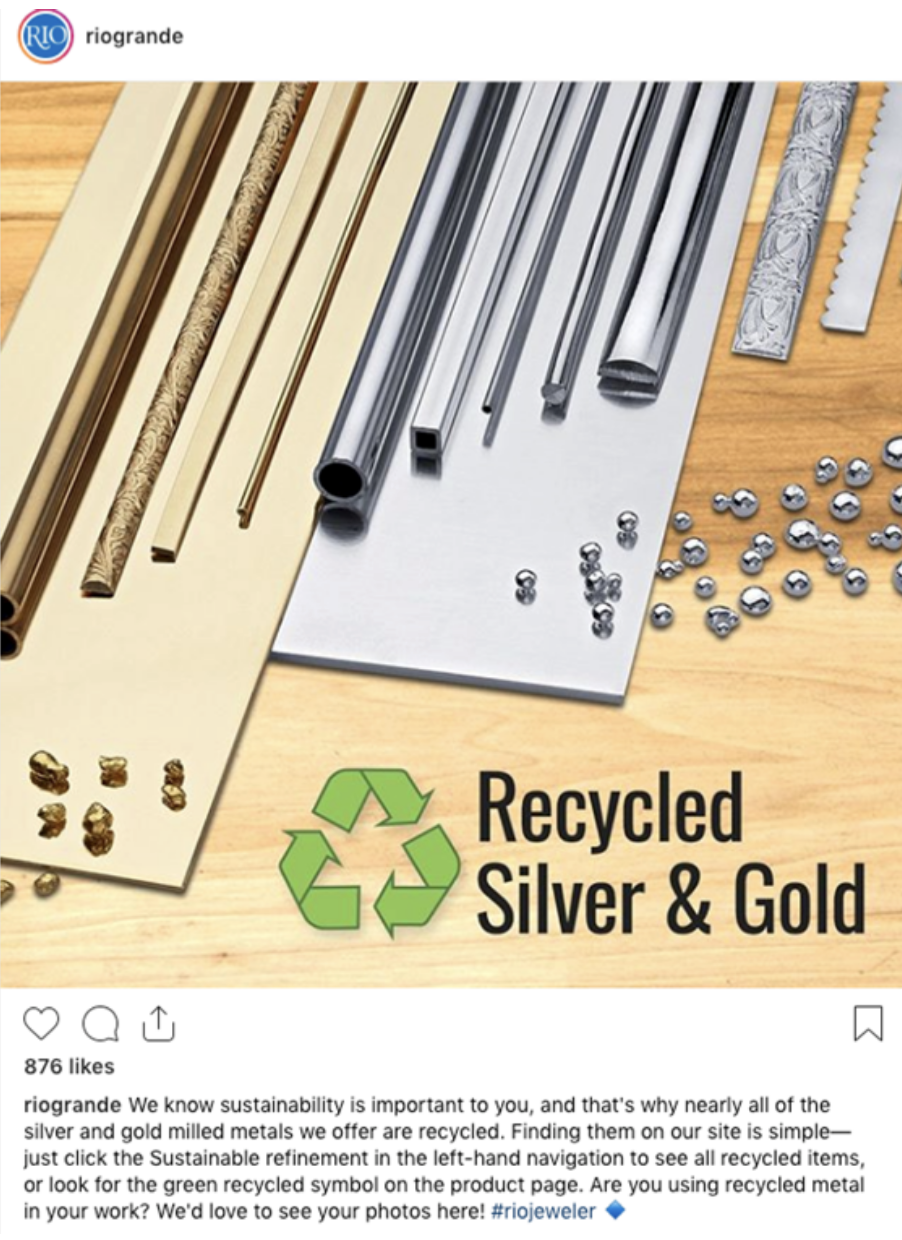
Rio Grande is owned by Berkshire Hathaway. Playing the recycled gold game is great for the bottom line!
They buy scrap gold from jewelers at a discount. Then, they brand their gold as “certified recycled” which is really just a kind of spin. The “certification” in the term “certified recycled gold” refers to gold purchased from a refiner, NOT back to the mine.
Generic dirty gold is now branded, certified recycled gold sold for a healthy healthy upcharge.
Now, putting it all together, there can only be one conclusion: Marketing RECYCLED GOLD as ethical is a BIG LIE:
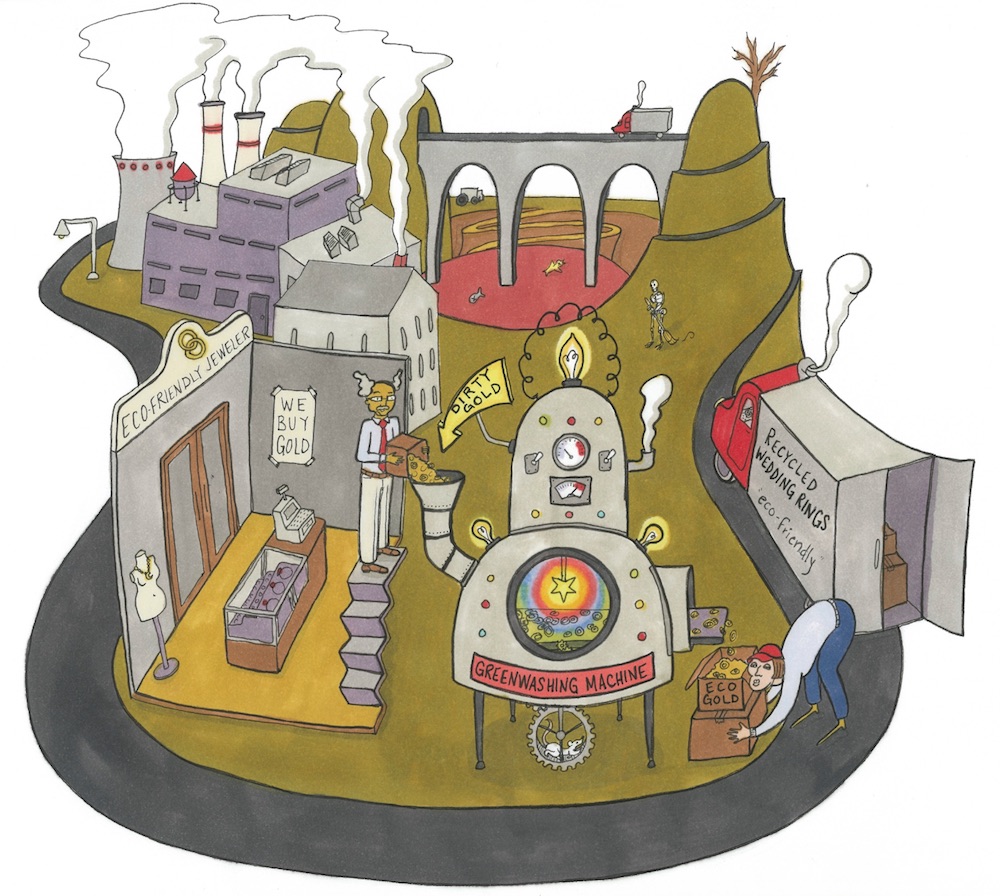
Here’s what it comes down to:
Just about every jeweler out there is now branding themselves as ethical. Jewelers co-opt the concept of “recycled” to construct a halo effect around their recycled gold engagement and wedding rings.
Jewelers, supply houses, and trade press all work together. Just check out all the blogs and articles mentioning “eco-friendly” recycled gold jewelers. The consistency in the deception has become a form of manufacturing consent.
But there is one company that deserves a special call out for their recycled jewelry narratives: Brilliant Earth.
The Emperor of Recycled Gold
Brilliant Earth has several retail stores in major markets and their website gets over 1M visits a month. They dominate the ethical jewelry space. They describe recycled metals as part of their “movement” as the “global leader in ethically sourced fine jewelry.”
Here’s a screenshot about the value of recycled gold from their website:

In fact, using recycled gold to buy a wedding ring from this company has ZERO impact on the practices of major gold producers, such as Newmont, or Barrick Gold who together mined over ten million ounces in 2020.
But with Brilliant Earth, unfortunately, it gets even worse.
If you are even considering buying from them read my Ultimate Brilliant Earth Review.
To really understand "ethics" and jewelry, you need to know this:
About 20% of gold comes from small-scale miners. They make up 80% of the world’s gold mining labor. They are the largest source of global mercury contamination.
These producers mine in order to feed their families...and their lives are characterized by extreme poverty and exploitation.
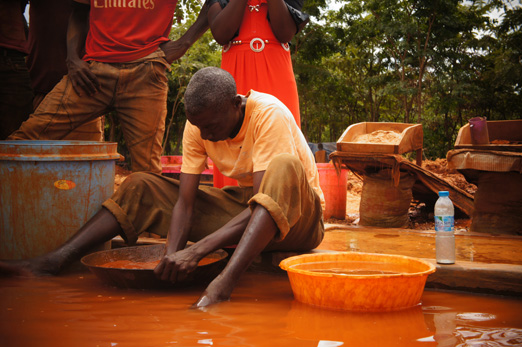
I took this photo of a small-scale miner in Tanzania mixing gold in mud and mercury to create an amalgum. Later, he will burn off the mercury in his frying pan, creating methyl mercury, a dangerous neurotoxin. Millions of people are engaged in this process. Right. Now.
Ethical jewelry should support small scale mining communities with best practices that allow them to protect their environment while feeding their families and supporting their communities.
Out of millions of small-scale miners needing help, fewer than 15K have benefitted from programs designed to help them receive fair prices and work in safer conditions.
A big part of the reason for this is the "ethical jewelry" recycled gold big lie. A secondary reason is that refiners mark up this gold, making it unaffordable, but that’s a different story.
PART 2: Gold That Has Positive Impact to the World
Some jewelers say that using recycled gold is a transition product. It’s better than using newly mined gold. As a product itself, I have no objection to using recycled gold and offer it as an option for customers who do not want to pay for more ethically sourced gold.
Many of my customers use gold which I purchase at 93% of its spot value to pay for their job. I end up selling some of it to buy Fairtrade gold, but often I refine it into pure 24K gold and use for new jobs.
What I object to is the branding of recycled gold as ethical or green.
There is one condition where using recycled gold actually is the best choice.
Certain gold with great symbolic value can be used to create brand new designs. Here’s a before and after photo showing how we used old wedding and engagement rings passed down through a family to make new pieces:
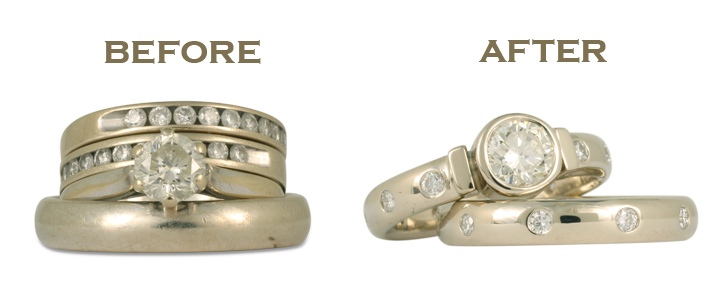
I’ve done hundreds of projects like this over my 26 years as a jeweler.
Gold from Grandpa's wedding ring has infinite sentimental value, but using it has zero social or environmental value.
The reason why I oppose ALL narratives that elevate recycled gold is simple: positioning recycled gold jewelry as the ethical solution is not only greenwashing-- it actively damaging to programs that would actually allow the people of the land to benefit from the resources on the land.
Specifically, I'm talking about Fairtrade or Fairmined gold.
Here’s why:
Take a look at this video I took in Tanzania. This small scale miner is mixing gold in water and mercury, poisoning himself.
Gold is mixed with mercury because mercury creates an amalgam of mercury and gold, as shown in this photo:
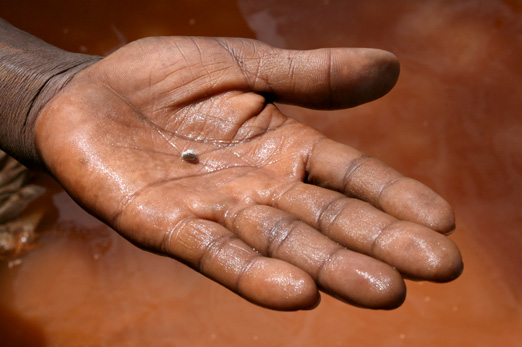
Small-scale miners typically burn off the mercury often using their frying pans, producing methylmercury — one of the most dangerous neurotoxins known to man.
Small-scale gold mining is the #1 contributor to global mercury pollution.
In the UK, where the ethical jewelry sector doesn’t mislead the public, no serious jeweler would advocate for recycled gold. Fairtrade Gold is the choice for over three hundred jewelers. They want to help small-scale miners.
But in the US, there’s only one Fairtrade Gold jeweler. Full disclosure — it’s me. There are a few more Fairmined jewelers, which are similar in their gold programs to Fairtrade.
At certified Fairtrade Gold mines, miners are paid about 99% of spot value for their gold — typically 25%+ more than what they had been earning. Plus, mining communities receive an additional US $2000 premium per kilo of gold.

The families of miners at Macdesa also benefit from fair wages and community premiums.
A democratic system determines how this premium is spent. Typically, it goes to projects such as healthcare and education.
Our current source for Fairtrade Gold is Macdesa, a mine located in Peru. (Read their story here!)
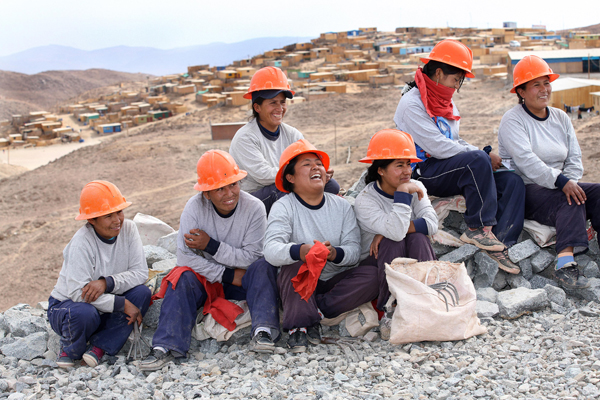
A team of truly empowered Fairtrade miners from the Esperanza Miners' Association in Peru.
By keeping mercury out of streams, rivers, and groundwater, Fairtrade Gold brings huge benefit to the Earth — and all of us living here.
Small-scale mining through Fairtrade requires less waste than large-scale mining to produce gold for a wedding ring.
Large mining operations can crush over 160 tons of rock to get an ounce of gold. That means the gold used to create a single wedding ring might generate 100,000 pounds of mine tailings (waste).
Small-scale mining often takes place in areas where there is an ounce of gold per ton of dirt. That means the gold used to create a Fairtrade Gold wedding ring might cause a mere 500 pounds of mine tailings.
Here’s what’s really great:
Fairtrade Gold allows you to align the sourcing of your wedding ring with its beautiful symbolism.
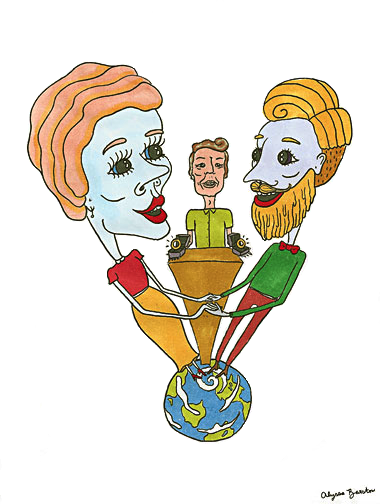
Marc Choyt is president of Reflective Jewelry, a designer jewelry company founded in 1995. He pioneered the ethical sourcing movement in North America and is also the only certified Fairtrade Gold jeweler in the United States. Choyt’s company was named Santa Fe New Mexico’s Green Business of the Year in 2019, and he has been honored with several awards for his efforts to support ethical jewelry. His ebook, Ethical Jewelry Exposé: Lies, Damn Lies and Conflict Free Diamonds, is available online. Choyt can be reached on Twitter at @Circlemanifesto or by email at marc(at)reflectivejewelry.com.